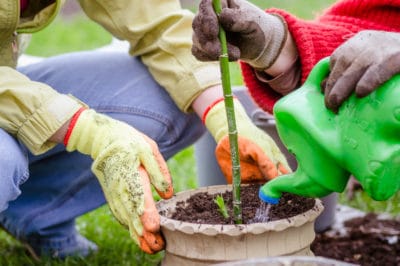Preparing for a Transplant
Don’t try to transplant when the bamboo is actively growing; very early spring or late fall are the best times to move bamboo. Prepare the new location or container well in advance. In the garden, you’ll want to make sure the soil drains well – perhaps a raised bed – and if it’s a running bamboo, put in any walls or barriers to contain the spread. Add organic compost to the garden soil.
Digging the Clump
Bamboo roots are surprisingly tough. If you can use one, a chainsaw may be the best way to cut through them. However, a sharp shovel or ax will also work if you have the necessary muscle power. Cut through the earth about a foot away from your desired clump, slicing down about 12 inches in a complete circle. Then slide the shovel under the clump and lift it up.
Minimize Transplant Shock
Although tough, the roots are also sensitive to sunlight and air movement. To minimize transplant shock:
- Move the plant on a cloudy, misty day.
- Immediately plunge the root mass into a bucket of water.
- Shade the roots immediately with burlap.
- Don’t allow the plant to lie on the ground; prop against a wall or fence.
Moving the Bamboo
Moving the plant with the roots in a bucket helps keep the roots hydrated. It also means you aren’t lugging around the full weight of the root mass on a slender stem. Water the planting hole well before placing the plant in its new home. Firm soil around the roots. Provide stakes or guy wires for support. Stretch shade-cloth or something similar over the plant until it becomes established.
Transplanting Into a Pot
Select a one or two year old culm. Trim away any dead or broken canes and then cut the stems down so only four remain. Place commercial potting soil in a 10-gallon or larger pot. Lift the culm, dip into a bucket of water and immediately place it in the pot at the same soil level. Firm soil around roots and water in well.
